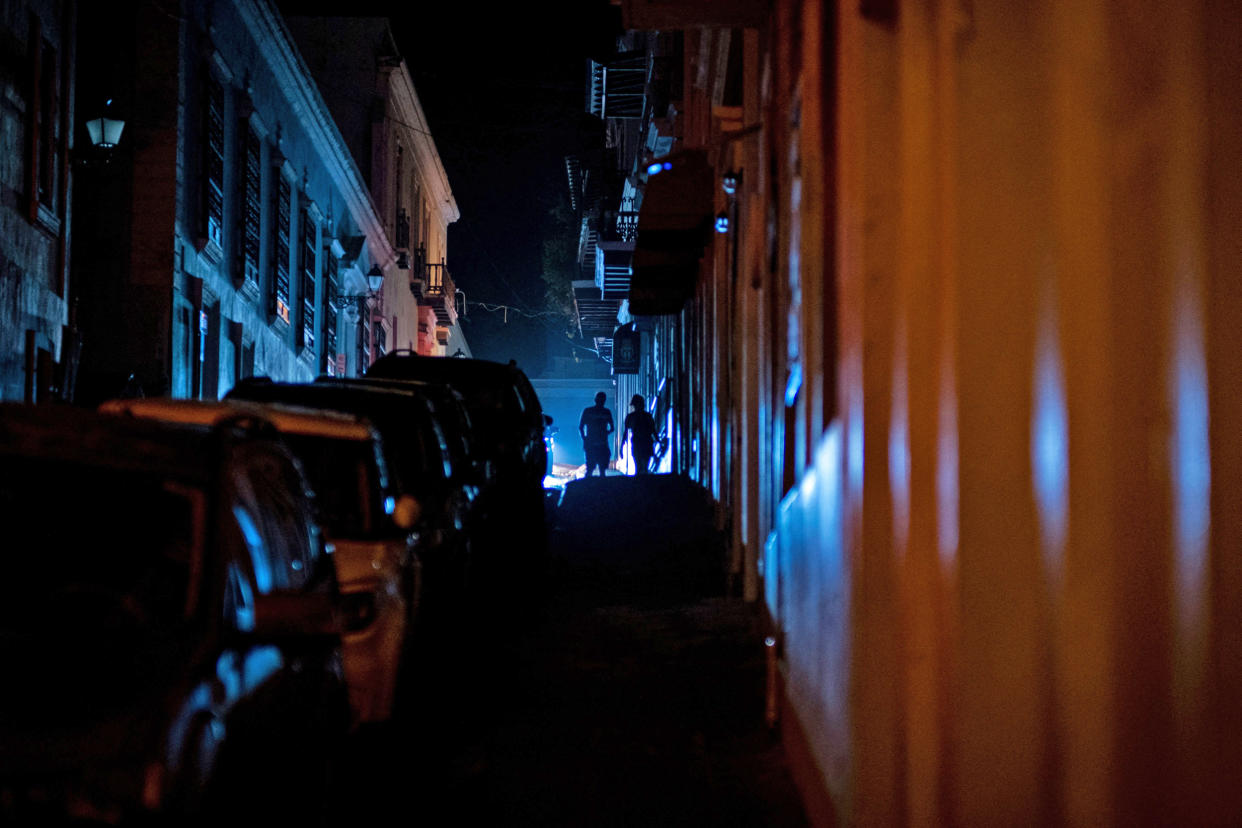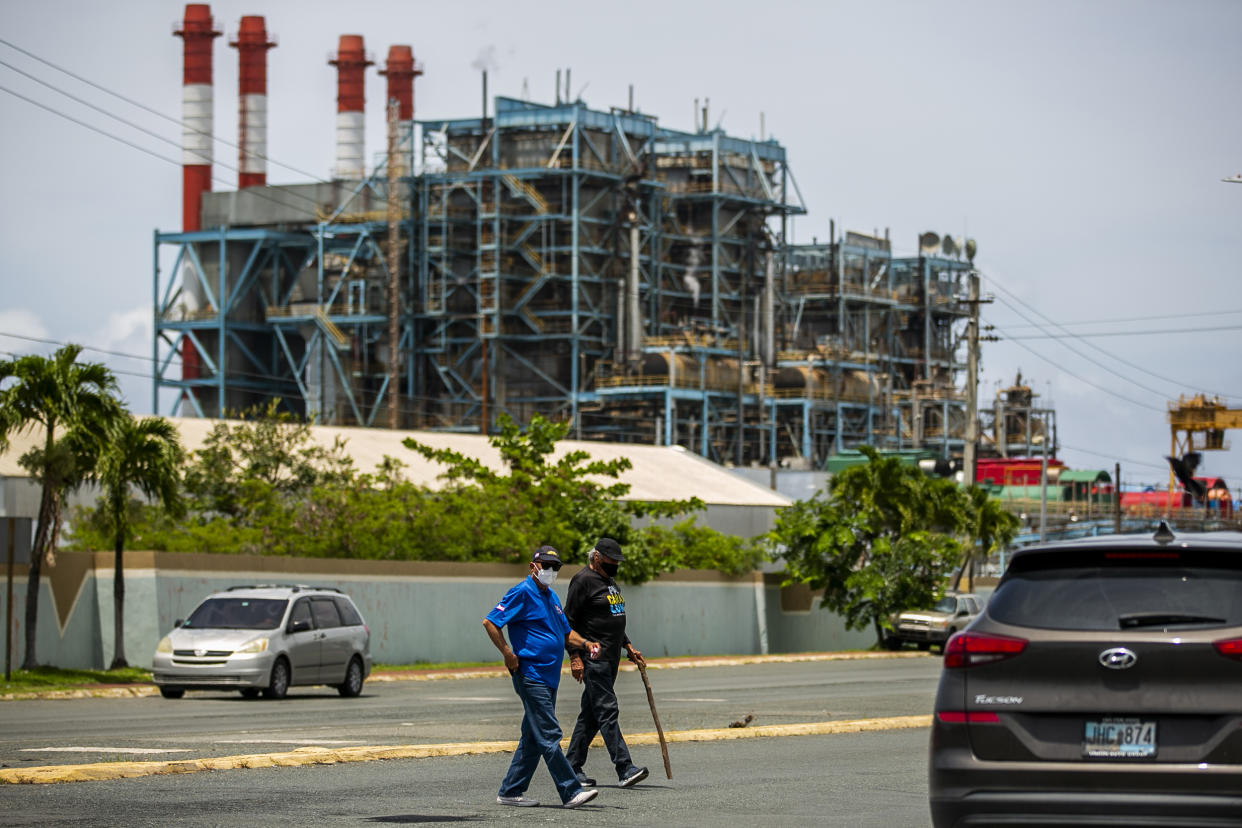Will Puerto Rico's debt overhaul bring a new chance to prioritize clean energy?
Officials in Puerto Rico are going back to the drawing board after they scrapped a deal that would have cut part of the public debt owed by the island’s bankrupt power company.
Puerto Rico has a new opportunity to effectively restructure its power company’s debt to provide incentives for its transition to renewable energy, a goal supported by both local and federal policies.
Some experts had criticized the initial debt-restructuring agreement, saying it wouldn't have significantly reduced the power company's debt load while discouraging the U.S. territory's transition to renewable energy — and contributing to a rise in electric bills for Puerto Ricans, who already pay almost twice as much as customers in the U.S. mainland for unreliable electricity.
Despite the criticism, rising inflation and surging oil prices motivated Gov. Pedro Pierluisi to cancel the deal and renegotiate an agreement.
The Puerto Rico Electric Power Authority, or PREPA, the island’s power company, holds about $9 billion in debt, the largest of any U.S. public corporation when it declared bankruptcy in 2017.
While Puerto Rico’s government formally exited bankruptcy two weeks ago, debt-restructuring proceedings for PREPA and for Puerto Rico’s Highways and Transportation Authority remain unresolved.
The federal fiscal oversight board that manages Puerto Rico’s finances is entering a mediation process with bondholders and others who own the power company's debt to potentially reach another agreement.
U.S. District Judge Laura Taylor Swain of Southern New York, who has been presiding over Puerto Rico’s bankruptcy-like proceedings since May 2017, set a May 2 deadline to do so. If no agreement is reached, the restructuring would have to be resolved by the courts, which could take years.
Ahead of the mediation process, the Center for a New Economy, a Puerto Rico-based nonpartisan think tank, issued a series of recommendations to ensure a viable agreement is reached.
The recommendations include minimizing energy rate increases and providing PREPA with a path out of financial distress by reducing its debt by at least 44 percent. The previous agreement would have cut the debt by nearly 33 percent.
Sergio Marxuach, a policy director at the Center for a New Economy, told reporters at a roundtable last week that laws don't require the federal fiscal oversight board to show proof that the entity being restructured — in this case PREPA — will remain solvent.
The board was created in 2016, during the Obama administration, when Congress passed the Puerto Rico Oversight, Management, and Economic Stability Act, or PROMESA, to create a mechanism for Puerto Rico to restructure its debt in federal court — after U.S. laws arbitrarily excluded the territory from the federal bankruptcy code.
“However, PROMESA does require an analysis showing that the implementation of the plan is feasible,” Marxuach said in Spanish. “Whatever happens with this process, we need to ensure that our power company is a financially solvent entity.”

Aiming for renewables
Against that uncertain backdrop, Puerto Rico is embarking on a transition supported by federal and local policies to ensure it is able to generate 100 percent renewable electricity by 2050.
Less than 4 percent of power generation in Puerto Rico comes from renewable energy.
The lack of investment in the power grid goes back nearly a decade, as limited access to capital and the funding of current spending through long-term debt led to little maintenance of an outdated grid, which worsened the power system’s overall performance and hampered its transition to clean energy. The deterioration was aggravated by Hurricane Maria — which devastated the electric grid, triggering the world’s second-longest blackout.
The board approved 18 renewable energy projects last Thursday as part of an effort to kick off the island's transition to clean energy.
The projects are part of the transition's first phase, which started in February 2021 after the board directed PREPA to procure 3,700 megawatts of renewable energy. The 18 projects fulfill about a quarter of that goal.
If the projects are implemented successfully, 23 percent of all of the energy produced in Puerto Rico will come from renewable sources.
However, that's far from what local lawmakers agreed on.
A 2019 law establishing Puerto Rico's new energy public policy after Hurricane Maria says 40 percent of the island's energy must come from renewable sources by 2025.
If Puerto Rico wants to achieve the target, the government must procure double the amount of renewable energy megawatts it is purchasing now, said Alejandro Figueroa, the board's infrastructure director. He will be leading the pending mediation process on the debt restructuring following the resignation of Natalie Jaresko, the executive director of Puerto Rico’s financial oversight board, which is effective Friday.

If the mediation process is successful, it will probably be completed before the U.S. Energy Department conducts a community-driven study, known as PR100, funded by the Federal Emergency Management Agency, to evaluate pathways for Puerto Rico to achieve 100 percent renewable energy by 2050.
The final findings of the PR100 study are expected to be ready in two years.
'The right path forward'
The Biden administration has already committed $12 billion in federal aid toward revamping Puerto Rico’s energy sector. Three federal agencies — the departments of Energy, Homeland Security and Housing and Urban Development — signed an agreement last month to ensure that the investment leads to a more resilient and sustainable grid that is consistent with President Joe Biden’s climate resilience goals, as well as Puerto Rico’s energy public policy.
Antonio Medina, a member of the federal fiscal oversight board, celebrated the approval of the new renewable energy projects at a public hearing Friday, saying, "It's the right path forward for Puerto Rico to move away from other types of generation that are not efficient."
"However, we cannot walk away from our past," Medina said, pointing out that PREPA still owes $9 billion to unsecured creditors, bondholders and people who lent their money when it had no credit. "We also owe $4 billion to pensioners. The pension plan at PREPA is significantly underfunded. We also have a responsibility towards them."
Medina promised that the board would do its best to reach an agreement that carefully balances everyone’s interests.
Follow NBC Latino on Facebook, Twitter and Instagram.
